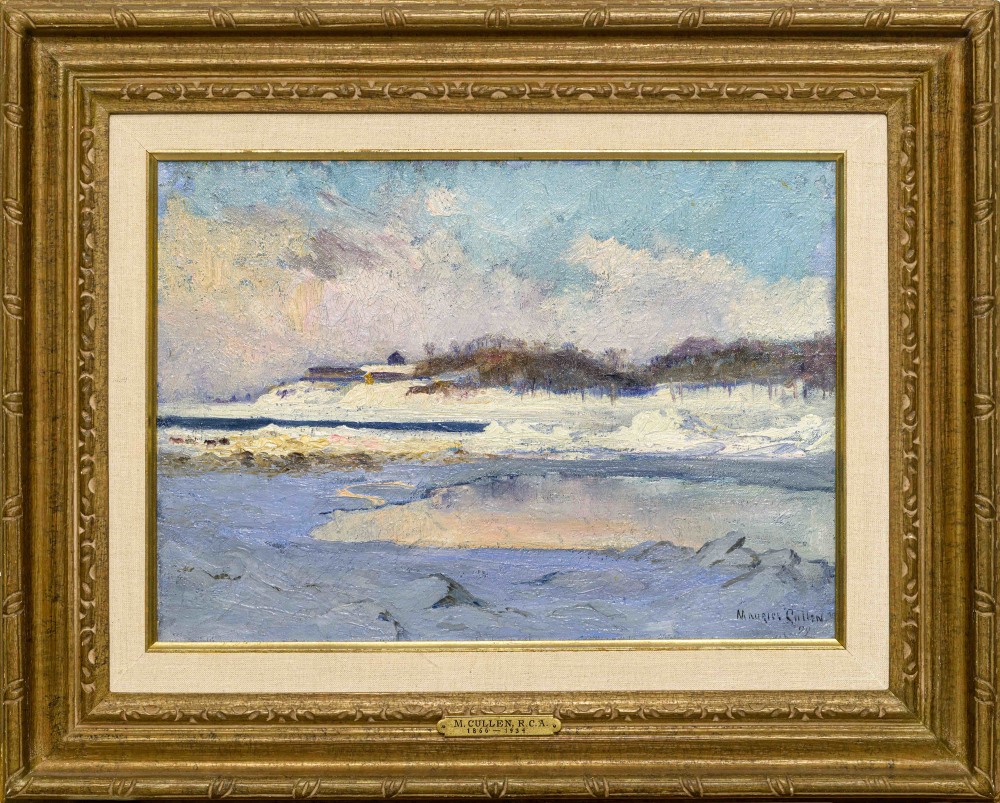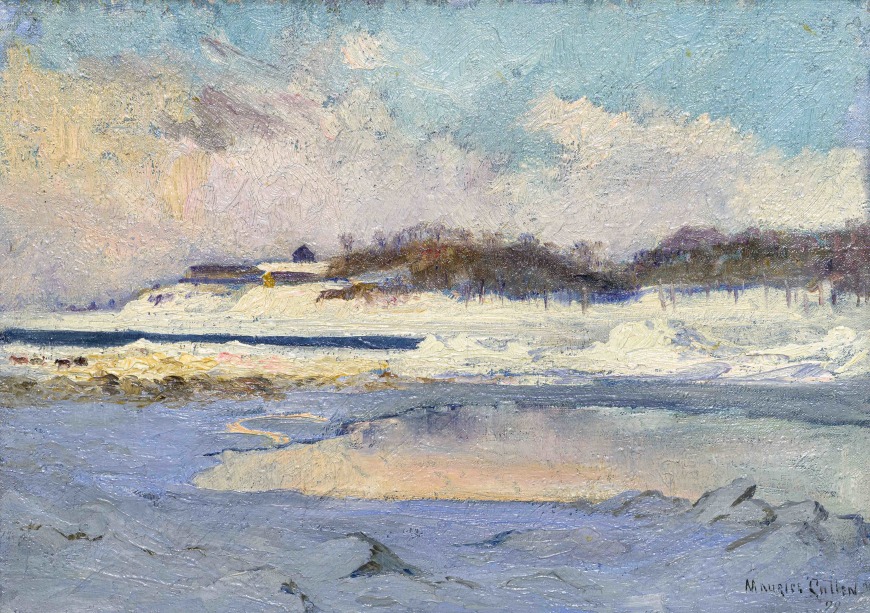25.4 x 35.6 cm
Alan Klinkhoff Gallery Maurice Cullen Inventory No. AK01342
Walter Klinkhoff Gallery Cullen Inventory No. 1342
Inscriptions
signed and dated, ‘Maurice Cullen / 99’ (lower right)Provenance
Walter Klinkhoff Gallery, Montreal
Private collection, Town of Mount Royal.
Winter near Beaupré of 1899 is a fine example of the contribution by Maurice Cullen to Canadian Impressionism. In his paper, “Maurice Cullen and the Group of Seven”, Peter Mellen, describes a Maurice Cullen of 1904, “…which has almost twenty different snow tones in it. Cullen acquired an extensive knowledge of the effects of light and snow from literally thousands of sketches before nature.” [1]
In Winter near Beaupré, Cullen’s “vocabulary” is paint describing snow and sky. The artist’s interest is the play of light acting on his composition, ranging from the foreground in the shadow and through the picture plane from the middle ground and onward where the scene basks in a kaleidoscope of colour and light of the setting sun.
Our Walter Klinkhoff Gallery Cullen inventory, an inventory we at Galerie Alan Klinkhoff continue today, places this composition of 1899 at Beaupré, a reasonable hypothesis. Directly in the middle on the left edge of Cullen’s canvas, almost incidentally is a suggestion of activity. Upon closer consideration, the artist has included an ice bridge defined with some clarity by two horse drawn sleighs crossing.
There was often an ice bridge at Beaupré crossing from the North Shore over to Ile d’Orleans. One senses that the specific locations on both the Island and at Beaupré were contingent in part upon where ice blockages formed that could be cultivated into solid bridges. These ice bridges served an important role in the economic and social activity of the region, forming the connection between the otherwise isolated Island during the winter months.
Interestingly, this composition is for Cullen an unusually small format for the work on canvas. His primer serves to offer a rich texture and added dimension to the scene.
_______________________
Footnote:
[1] Peter Mellen. “Maurice Cullen and the Group of Seven”. Vie des Arts, 1970, (61), 26–29.













